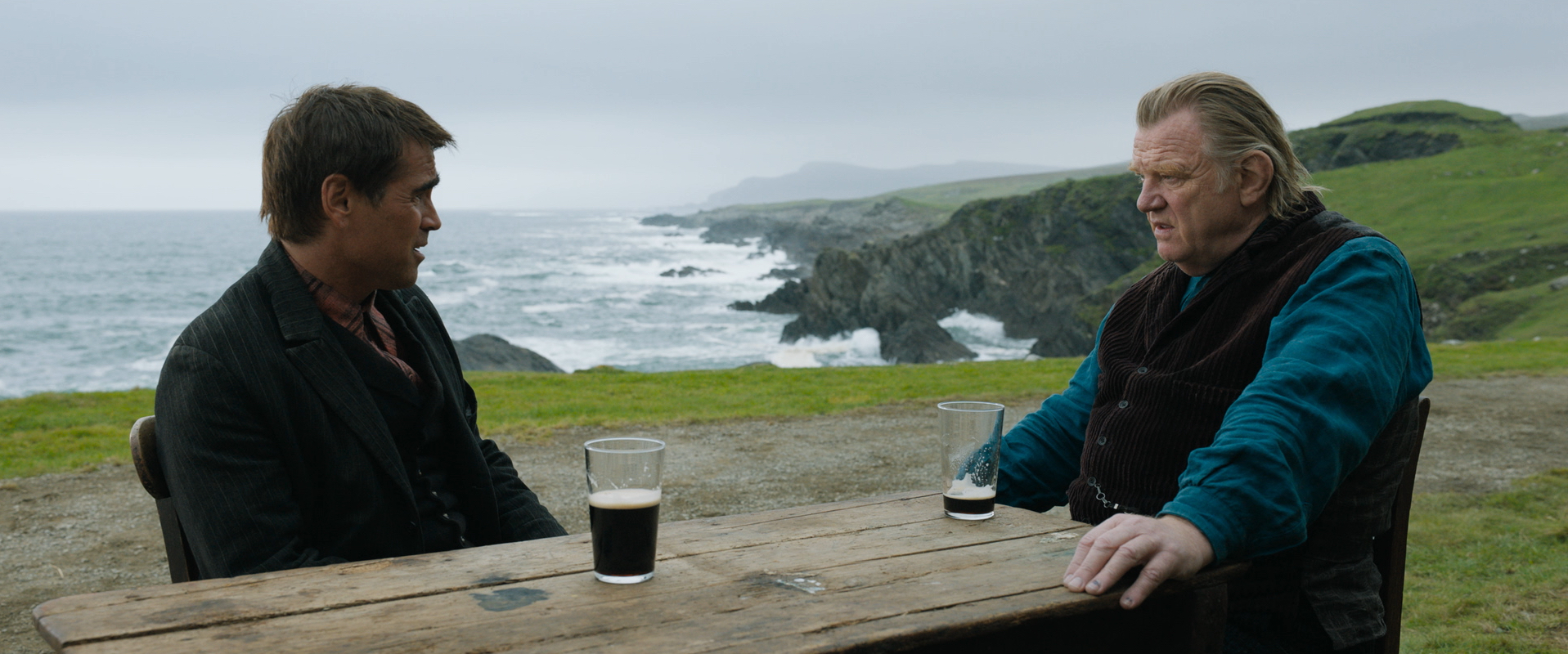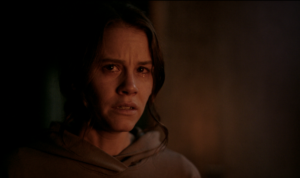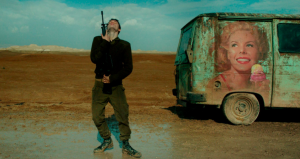How would you react if your best friend in the whole world started to ignore you completely out of the blue? That’s the premise of writer-director Martin McDonagh’s The Banshees of Inisherin (2022), only heightened by its isolated setting on Inisherin, a sparsely-populated island off the coast of Ireland in 1923. The story may feel small, but McDonagh—supreme storyteller as he is—uses this breakup to meditate on much deeper issues than a wrecked friendship. Discussions of loneliness and niceness and greatness all weave together to produce a profoundly philosophical masterpiece.
The story follows two men, Pádraic Súilleabháin (Colin Farrell) and Colm Doherty (Brendan Gleeson), who spend their time chatting and drinking at the pub. Every day at 2:00 in the afternoon, Pádraic walks over to his friend’s house, and they head out for a pint. But one day, Colm cold-shoulders his buddy, setting off a chain of events that unsettle all of Inisherin.
Banshees takes place during the Irish Civil War, and the conflict hums in the background of the film, popping up occasionally in the form of audible artillery and offhand remarks. Inisherin is isolated from the struggles of the mainland, and the villagers don’t really know what’s going on: To them, the war is merely an occasional curiosity. Though some critics have seen the fight between Pádraic and Colm as an allegory for the war, their breakup can also be read as a conflict between two perspectives on life.
After being shrugged off at the pub by Colm, a distraught Pádraic tries to figure out what prompted this breakup. “I just don’t like you no more,” is Colm’s initial explanation, covering up the deeper reasoning behind his decision. Suddenly and inexplicably aware of his age, Colm—a fiddle player and composer—wants to leave his mark on the world through his music, and Pádraic’s simple conversation (like a two hour chat about what he found in his pony’s shite) is distracting him.
As the film unfolds, the two men’s conflicting attitudes towards their lives become even clearer. And, to be fair to Colm, it does seem like they have nothing in common other than living on Inisherin. Pádraic, on a whiskey-fueled tirade, rails against his ex-best friend at the pub for ignoring him. Colm argues that history doesn’t remember nice guys, and he wants to be remembered for his music. Pádraic enthusiastically (and sweetly) yells that he’d rather be nice, manifesting their inherent differences.
But what really elevates the film is Colm’s grim threat to cut a finger off his fiddle-playing hand every time Pádraic tries to speak to him. Naturally, things fall apart. Pádraic’s descent from being a decent guy in the face of Colm’s bloody threat and their split forms the crux of the story.
Banshees brings Gleeson and Farrell together for the first time since McDonagh’s feature-film debut In Bruges (2008), but gone is the near-constant banter between the two leads and the quick pace of that movie. Instead, their conversations take shape as Pádraic’s puppy-dog frustration collides with Colm’s gruff, brooding persona: It takes two to tango, I don’t dance, But you were dancing with your dog?
Farrell and Gleeson manage to find a balance between comedy and drama in their acting that shines throughout the film’s nearly-two-hour runtime. Their performances make both of their conflicting perspectives understandable: We get why Colm doesn’t want to talk to Pádraic anymore, but at the same time we sympathize with Pádraic’s tender anguish.
McDonagh also takes it slow, letting the melancholic atmosphere of Inisherin’s setting take over. Sweeping shots of the island in its almost-ethereal natural beauty juxtaposed with the rustic, pastoral setting of the village evoke a pleasant backdrop for the unsettling tension at hand. But this peacefulness starts to feel eerie as the tension between Pádraic and Colm grows.
And when the finger-induced gore starts to appear the camera lingers, forcing the audience to pay attention. Unlike In Bruges or Seven Psychopaths (2012), Banshees doesn’t seem to revel in portraying violence, even though it shares the same macabre sensibilities as McDonagh’s other films. Instead, it picks its moments, heightening their impact despite their small scale: A pair of bloody shears stuck upright into a table or severed fingers lying on the ground that the audience has no choice but to look at.
The Banshees of Inisherin is a tragicomedy that thrills in straddling boundaries. Its premise is at once both childish and serious, its leads both sympathetic and irritating, its aesthetic both visually arresting and repulsive. McDonagh’s writing and direction—tinged with his characteristic cynicism—and Farrell and Gleeson’s stellar acting create a hilarious film well-worth your time. Give it a try. It’ll break your heart.





